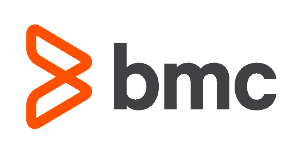Why do you need a CMDB tool in 2020? ITIL has been around for over 30 years touting the virtues of a configuration management database (CMDB) to help you manage your IT environment and to serve as the core of your IT Service Management (ITSM) processes. Is this guidance still relevant, or have modern IT systems evolved beyond the need for a CMDB?
Table of Contents
ToggleThese are some great questions, and while a lot has changed in the IT industry since ITIL was first introduced in the 1980s, the need for a CMDB and configuration management system to serve as a centralized place to track your IT components and their relationships has remained steadfast. One might argue that a CMDB tool is more important now than ever. The purpose of the CMDB is to aggregate information about your IT components, configuration items, (CI) into a single repository along with supporting data about them, including relationships and dependencies. This information is used to give you a complete and accurate “big picture” view of your IT environment to help your staff effectively analyze changes, incidents, and problems, and to direct investments efficiently through IT Asset Management (ITAM) and Service Level Agreements (SLA’s).
Just like the rest of your IT environment, CMDBs have evolved a lot over the past few decades. Legacy CMDBs were large on-premise databases, often standing alone from other parts of the ITSM system and populated through manual updates. The data they contained was often incomplete, outdated, and lacking much of the richness needed for analysis. In comparison, most modern CMDBs are hosted in the cloud, deeply integrated with the ITSM and reporting capabilities that leverage them and populated with automated discovery tools and trigger driven workflows. A modern CMDB tool can help you keep your configuration data current, complete, and accurate at a much lower overhead cost than previously achievable.
If you are considering implementing a CMDB for the first time or upgrading your current CMDB to access some of the modern capabilities available, there are many commercial offerings available in the marketplace that are worth looking into. Not all CMDBs are created equal, so it is essential to evaluate each option’s strengths and weaknesses in the context of your organization’s needs.
Here are 5 of the leading CMDB solution providers for you to consider.
BMC

When you think leading ITSM vendors, BMC has been near the top of the list for decades. The BMC Helix CMDB offering is focused on integrating disparate data sources into a single pane of glass to drive decision making and workflow automation. BMC’s CMDB solution’s strength is in data aggregation – recognizing that some configuration data can be discovered, some come from spreadsheets, and some come from third-party data feeds. The BMC solution is a good choice if your IT services have a lot of external dependencies, and your core need is the orchestration of ITSM processes across a partner ecosystem.
Device42

If your company is aggressively embracing cloud technologies, the CMDB offering from Device 42 might be a good fit for you. Device 42 CMDB brings capabilities for asset management (ITAM), IP Management (IPAM), Cloud Management, Application Dependency Management (ADM), and Software License Management (SLM) all into a unified platform to help you manage cloud and hybrid infrastructure. Device 42 isn’t a full-feature ITSM platform and is designed to work with your existing ITSM solution to support core ITIL processes. Separating your CMDB from your ITSM system may not seem like an intuitively good choice, but if you are looking for best-in-breed capabilities, this approach can lead to powerful results.
Freshworks

If you want a CMDB and an ITSM platform that is full-featured yet easy to implement and simple to use, Freshworks has an offering for you. Freshservice is the “no-hassle” ITSM offering from Freshworks and includes their CMDB solution. This offering is designed to take the complexity out of ITSM so users can focus on solving IT problems instead of managing data and navigating complex workflows. The CMDB is at the core of the Freshservice ITSM offering but the role it plays is often abstracted – you know its there playing a supporting role, but the focus is on the service desk where the data is put to use for day-to-day analysis.
ServiceNow

If you are a large enterprise needing robust features, scalability, and maximum configuration ability, ServiceNow is the ITSM system for you. Over the past decade, ServiceNow has become the industry-leading Service Management SaaS platform for large enterprises – reaching beyond the core ITIL processes to support the end-to-end activities that a modern IT organization performs. The CMDB sits at the heart of the ServiceNow platform and is used as the core data source for ITIL processes and custom workflows. If you are looking for a platform solution that will “do everything,” ServiceNow is a good option to consider.
Virima

Virima’s CMDB product is more than a database. Virima’s core strengths are automated discovery (capturing the data that is used to populate your CMDB) and visualizing your configuration data through service maps. The purpose of your CMDB is to manage and analyze your company’s configuration data so you can use it to drive better decisions, faster mean time to restore (MTTR), and more efficient resource utilization. Virima’s focus on discovery is what sets their offering apart. The Virima Discovery + CMDB solution can be used either with Virima’s ITSM solution or as a powerful upgrade to your existing ITSM platform.
Learn More about Virima’s CMDB
With IT environments becoming more prominent, more complex, faster changing, and more critical to business operations, understanding what components you have and how they connect is more important than ever. In even a small company, there is far more data than can be understood manually or managed through spreadsheets. Having a CMDB tool is imperative!
Summary:
Leading CMDB Providers
Why do you need a CMDB tool in 2020? ITIL has been around for over 30 years touting the virtues of a configuration management database (CMDB) to help you manage your IT environment and to serve as the core of your IT Service Management (ITSM) processes. Is this guidance still relevant, or have modern IT systems evolved beyond the need for a CMDB? Here are 5 of the leading CMDB solution providers for you to consider. 1. BMC: When you think leading ITSM vendors, BMC has been near the top of the list for decades. BMC’s CMDB solution’s strength is in data aggregation – recognizing that some configuration data can be discovered, some come from spreadsheets, and some come from third-party data feeds. 2. Device42: If your company is aggressively embracing cloud technologies, the CMDB offering from Device 42 might be a good fit for you. Device 42 CMDB brings capabilities for asset management (ITAM), IP Management (IPAM), Cloud Management, Application Dependency Management (ADM), and Software License Management (SLM) all into a unified platform to help you manage cloud and hybrid infrastructure. 3. Freshworks: If you want a CMDB and an ITSM platform that is full-featured yet easy to implement and simple to use, Freshworks has an offering for you. Freshservice is the “no-hassle” ITSM offering from Freshworks and includes their CMDB solution. 4. ServiceNow: If you are a large enterprise needing robust features, scalability, and maximum configuration ability, ServiceNow is the ITSM system for you. 5. Virima: Virima’s CMDB product is more than a database. Virima’s core strengths are automated discovery (capturing the data that is used to populate your CMDB) and visualizing your configuration data through service maps.”






